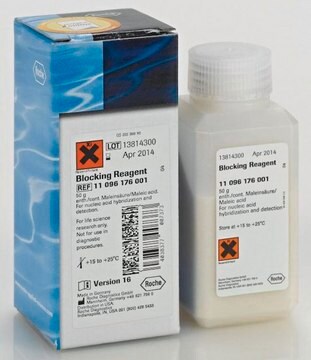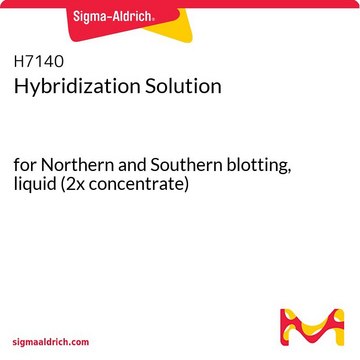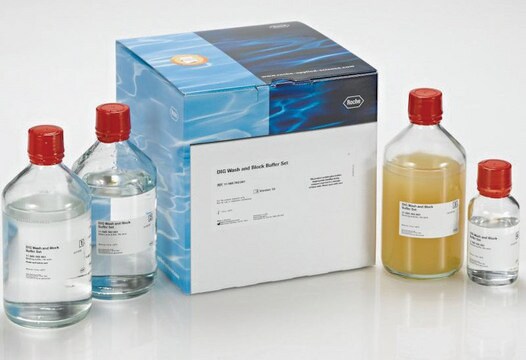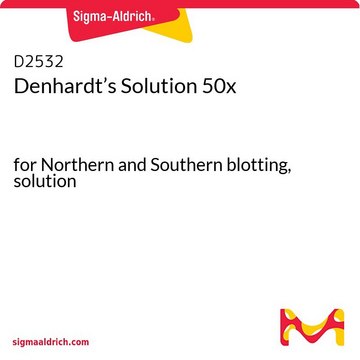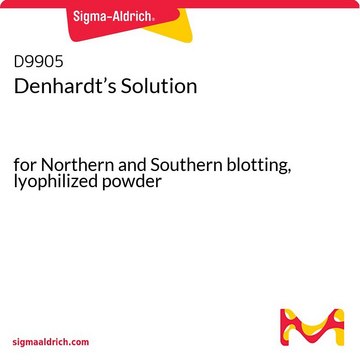H7033
PerfectHyb™ Plus Hybridization Buffer
for Northern and Southern blotting, solution
Synonym(s):
hyb buffer, hyb solution, hybridization solution, northern hybridization buffer, southern hybridization buffer
About This Item
Recommended Products
General description
Application
Features and Benefits
- Fast and easy-to-use
- Up to 20x more sensitive than conventional buffers
- Doesn′t require blocking steps
- Compatible with neutral and positively-charged membranes
- Compatible with chemiluminescent, colorimetric , and DIG detection assays
- Compatible with radioactive and non-radioactive probes
- Compatible with single or double-stranded DNA, RNA, and oligonucleotide probes
Other Notes
Legal Information
replaced by
Storage Class
12 - Non Combustible Liquids
wgk_germany
WGK 2
flash_point_f
Not applicable
flash_point_c
Not applicable
Certificates of Analysis (COA)
Search for Certificates of Analysis (COA) by entering the products Lot/Batch Number. Lot and Batch Numbers can be found on a product’s label following the words ‘Lot’ or ‘Batch’.
Already Own This Product?
Find documentation for the products that you have recently purchased in the Document Library.
Customers Also Viewed
Protocols
Membrane-based blotting applications that employ enzyme conjugates to generate colorimetric or chemiluminescent signal require the use of an added blocking step to decrease the signal generated by non-specific binding.
An introduction to both Northern and Southern blotting, popular methods for the transfer of macromolecules to membranous support. This article also offers a Southern blot protocol and a northern blot protocol.
Our team of scientists has experience in all areas of research including Life Science, Material Science, Chemical Synthesis, Chromatography, Analytical and many others.
Contact Technical Service

